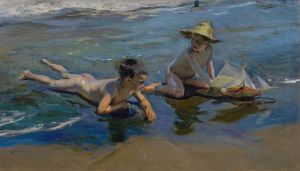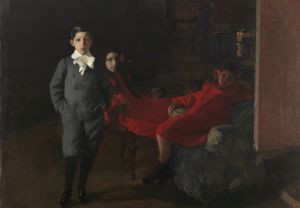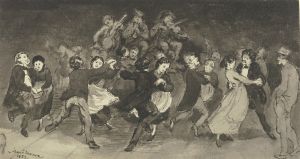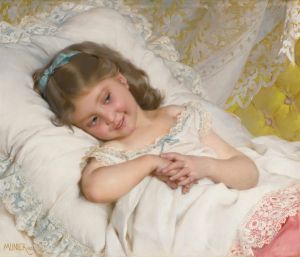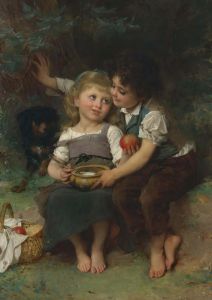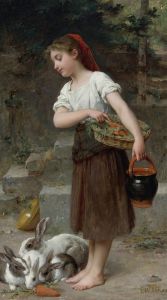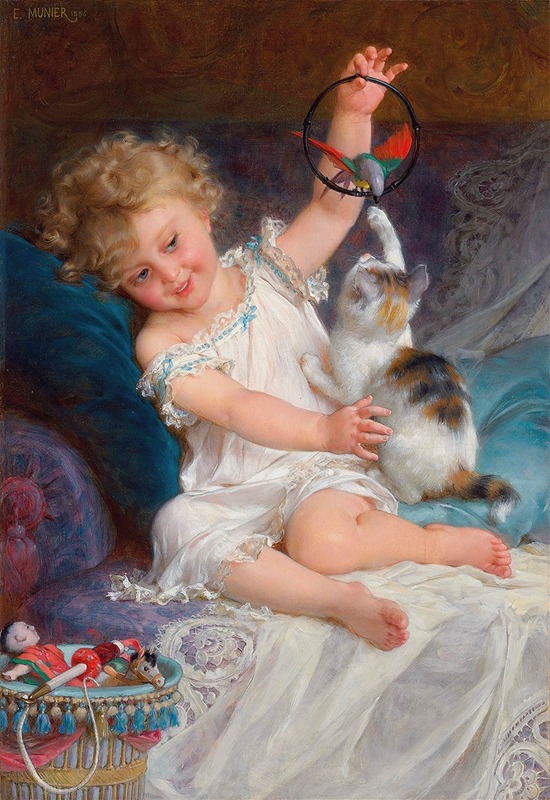
Playtime
A hand-painted replica of Émile Munier’s masterpiece Playtime, meticulously crafted by professional artists to capture the true essence of the original. Each piece is created with museum-quality canvas and rare mineral pigments, carefully painted by experienced artists with delicate brushstrokes and rich, layered colors to perfectly recreate the texture of the original artwork. Unlike machine-printed reproductions, this hand-painted version brings the painting to life, infused with the artist’s emotions and skill in every stroke. Whether for personal collection or home decoration, it instantly elevates the artistic atmosphere of any space.
Émile Munier was a French academic artist known for his detailed and realistic paintings, often depicting children and domestic scenes. One of his notable works is "Playtime," which exemplifies his skill in capturing the innocence and charm of childhood.
"Playtime" is a painting that showcases Munier's characteristic style, which combines elements of realism with a tender portrayal of his subjects. The painting typically features children engaged in playful activities, often accompanied by pets or toys, set against a backdrop that highlights Munier's attention to detail and his ability to render textures and fabrics with precision.
Munier was born in Paris in 1840 and studied under renowned artists such as William Bouguereau, who greatly influenced his style. Bouguereau's impact is evident in Munier's work, particularly in his use of smooth brushwork and his focus on the human figure. Munier's paintings often reflect a sense of warmth and affection, capturing moments of joy and innocence that resonate with viewers.
Throughout his career, Munier exhibited his works at the Paris Salon, where he gained recognition for his technical skill and the emotive quality of his paintings. His ability to depict the subtleties of light and shadow, as well as his meticulous attention to detail, earned him a place among the respected academic painters of his time.
"Playtime" is a testament to Munier's dedication to his craft and his ability to convey the simple pleasures of childhood. The painting's composition is carefully arranged to draw the viewer's eye to the central figures, often children absorbed in their play. Munier's use of color and light enhances the overall mood of the painting, creating a sense of warmth and intimacy.
The subjects in Munier's paintings, including "Playtime," are often depicted with a sense of realism that reflects his academic training. His works are characterized by their polished finish and the lifelike representation of his subjects. This attention to detail extends to the backgrounds and settings of his paintings, which are often richly decorated and provide context for the scenes he portrays.
Émile Munier's paintings, including "Playtime," continue to be appreciated for their technical excellence and their ability to evoke a sense of nostalgia and joy. His work remains a testament to the academic art tradition of the 19th century, and his paintings are held in various private collections and museums, where they continue to be admired by art enthusiasts and collectors.
In summary, "Playtime" by Émile Munier is a fine example of the artist's ability to capture the essence of childhood through his detailed and emotive painting style. Munier's work remains a significant part of the academic art movement, celebrated for its technical precision and its ability to convey the beauty and innocence of everyday life.






